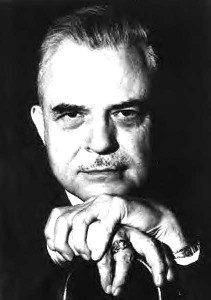History of Hypnosis:

“Group Hypnosis began with ancient civilizations. Many group rituals, such as mass chanting and meditation to a steady drum beat were parts of religious ceremonies. There was healing of the mind before any medical practice. The term Hypnosis comes from the Greek 'ypnos' which means sleep because of the Trance State. However Hypnosis is not sleep because the subject stays alert, can talk and move, and the brain waves differ.
The first type of hypnosis to be accepted and experimented with was animal hypnosis. In the 1600's, people calmed chickens hypnotically by various means, such as balancing wood shavings on their beaks or tying their heads to the ground and drawing a line with chalk in front of their beaks. In France, farmers learned to hypnotize hens to sit on eggs not their own. In the mid 1800's in Germany, traveling shows went from town to town with birds, rabbits, frogs, salamanders and others. In Manchester, a famed event was LaFountaine hypnotizing a lion. In the late 1800's, Hungarian hypnotist, Volgyesi hypnotized all the animals at the Budapest zoo. Scientists and biologists such as Preyer, Verworn and Emile Mesmet studied animal reflexes (like paralysis from fear) that might cause such phenomena.
Franz Anton Mesmer (1734-1815), a physician from Austria, has been widely acknowledged as the 'Father of Hypnosis'. He believed that there was some kind of quasi-magnetic fluid in the air we all breathe and that the body’s nerves would somehow absorbed this fluid. As an intelligent doctor, his prime focus was how to efficiently treat his patients, and he considered all diseases to be caused by the blockage of this magnetic fluid from circulating through the blood and nervous system. Curing disease for him was as simple as correcting the circulation of this fluid.
In the beginning, he used a magnet, then later the palm of his hand, which he would pass over someone’s diseased body in an attempted effort to restart the magnetic flow. The hand, and later the eyes, was believed to unblock the liquid by passing his hand over the affected areas and reacting by increasing its amount and flow. Through this the term 'animal magnetism' was created, and the procedure would be referred to as “Mesmerism.”
The Marquis de Puysegur (1751-1825), a pupil of Mesmers, was able to use 'animal magnetism' on a young peasant boy who then entered into a state of sleep while strangely enough still having the capacity to communicate back and forth with Puysegur and respond easily to his suggestions. When the peasant boy 'awoke' he couldn’t recall anything of what had just happened. Puysegur pondered that the will of the subject or client and the operators' actions were definitive variables in the success or failure of 'mesmerism'; in other words, psychological influences, internal and external were undoubtedly important in the entire process.
John Elliotson (1791-1868), a physician from England who held a chair at University College London was expelled from his medical profession as a direct result of his procedures with animal magnetism. During the same time a James Esdaile, a surgeon who operated on his patients using a 'mesmeric sleep' as his choice of anesthetic. Since this point the medical profession was completely therefore divided on its opinion of the usefulness and ethicality of mesmerism.
It wasn't until late in 1843 that the terms 'hypnotism' and 'hypnosis' were branded by James Braid (1795-1860). He was a surgeon from Scotland who worked in Manchester. He found that most experimental subjects could enter into a trance if they were simply told to fixate their eyes on a bright object, such as a silver watch.
He believed that there was some type of neurophysiologic process that was involved. And he found that hypnosis was very useful with disorders where there were no organic origins to the disease or issue that could be identified (e.c. headaches, skin problems etc.) He showed that a lone stimulus such as a word or an object was enough to bring his subjects. Back into trance No one really knew how or why the process of hypnosis 'worked', but the important thing at the time was that it did.”